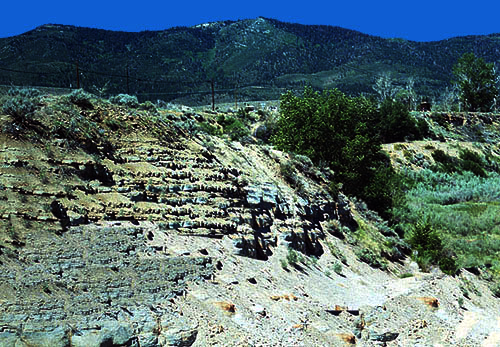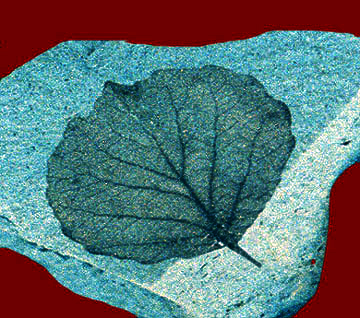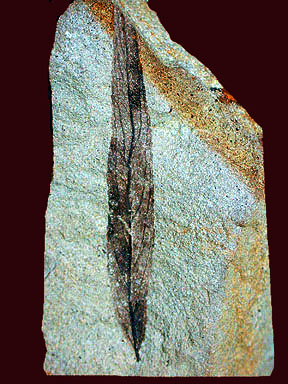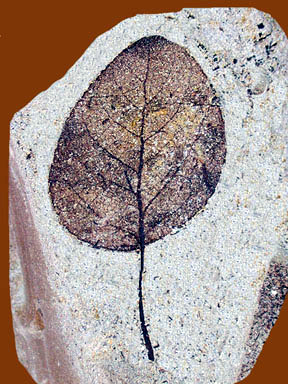
| Here is the primary fossil leaf locality in the Hunter Mountain Formation. The carbonized fossil leaves of cottonwoods, willows and pond weeds, plus conifer needles, cone scales and occasional cones occur in an unnamed geologic rock formation of late Miocene age (roughly 5.8 million years old, as dated by radiometric methods). Take a field trip to the Hunter Creek Sandstone fossil locality. |


